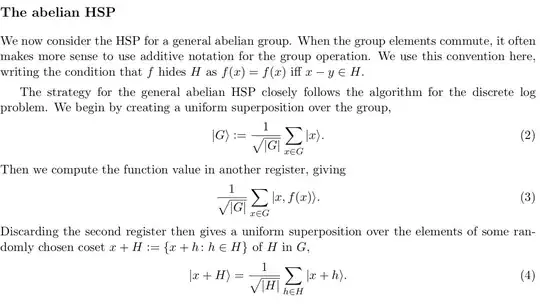(Made CW as an expansion of some other other answers)
Understanding the answer to why quantum algorithms often ignore the second register is a bit of a pons asinorum test toward figuring out more of the power afforded by quantum computers. For example, this point in particular even gave Simon (of Simon's alogirthm) pause, when he said:
I certainly envisioned executing this step [i.e., measuring the second register] — it would have been a lot harder to think through the algorithm without this simplification...
In Shor's original paper, he provided:
it would be sufficient to observe solely the value of $|c\rangle$ in the first register, but for clarity we will assume that we observe both $|c\rangle$ and $|x^a\pmod n\rangle$...
I think as Sam hinted there may be a confusion with the meaning of "discarding" or "removing" the second register. Here, this means that we need not actively measure the second register, and indeed, it's been suggested that we can throw this register into the trash, or say that we measure it but secretly not, or give it to our friend who says she'll measure it but won't.
The reason we need not measure this is because as both Sam and Abdulla indicate, you can trace out this second register and get the indicated results in the first register.
Many (most?) quantum algorithms have this weird feel where you do a little bit of work to prepare a first register into a uniform superposition, then do lot of work to calculate an oracle into a second register, then throw away this second register or ignore any results from measurement. After calculating the oracle into the second register, the critical information is stored into the phases in the overall wavefunction; these phases are available after performing the QFT on the first register.

